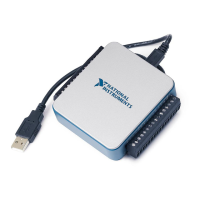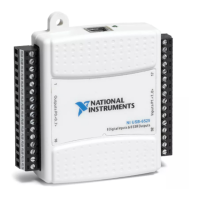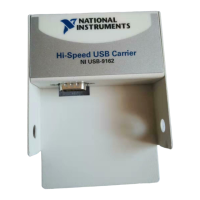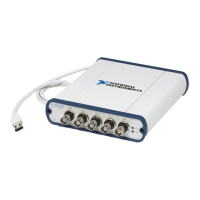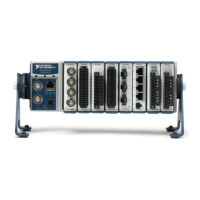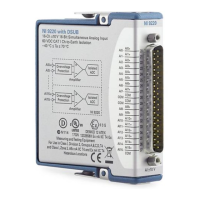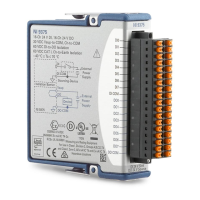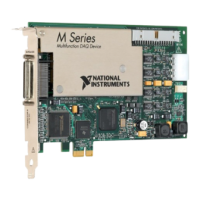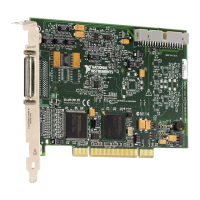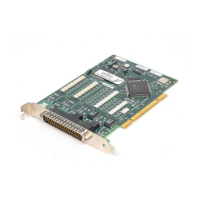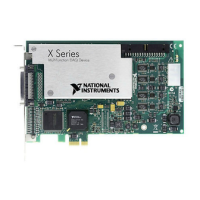NI USB-6001/6002/6003 User Guide | © National Instruments | 15
Floating Signal Sources
An instrument or device that has an isolated output is a floating signal source. A floating signal
source is not connected to the building ground system, but has an isolated ground-reference
point. Some examples of floating signal sources are outputs of transformers, thermocouples,
battery-powered devices, optical isolators, and isolation amplifiers.
For more information about field wiring and noise considerations for analog signals, go to
ni.com/info and enter Info Code rdfwn3.
When to Use Differential Connections with Floating Signal Sources
Use DIFF input connections for any channel that meets any of the following conditions:
• The input signal is low level and requires greater accuracy.
• The leads connecting the signal to the device are greater than 3 m (10 ft).
• The input signal requires a separate ground-reference point or return signal.
• The signal leads travel through noisy environments.
• Two analog input channels, AI+ and AI-, are available for the signal.
DIFF signal connections reduce noise pickup and increase common-mode noise rejection. DIFF
signal connections also allow input signals to float within the working voltage of the device.
With this type of connection, the instrumentation amplifier (IA) rejects both the common-mode
noise in the signal and the ground potential difference between the signal source and the device
ground.
Refer to the
Taking Differential Measurements section for more information about differential
connections.
When to Use Referenced Single-Ended (RSE) Connections with Floating
Signal Sources
Only use RSE input connections if the input signal meets all of the following conditions:
• The input signal can share a common reference point, AI GND, with other signals that use
RSE.
• The leads connecting the signal to the device are less than 3 m (10 ft).
DIFF input connections are recommended for greater signal integrity for any input signal that
does not meet the preceding conditions.
In the single-ended modes, more electrostatic and magnetic noise couples into the signal
connections than in DIFF configurations. The coupling is the result of differences in the signal
path. Magnetic coupling is proportional to the area between the two signal conductors. Electrical
coupling is a function of how much the electric field differs between the two conductors.
Refer to the
Taking Referenced Single-Ended Measurements section for more information about
RSE connections.

